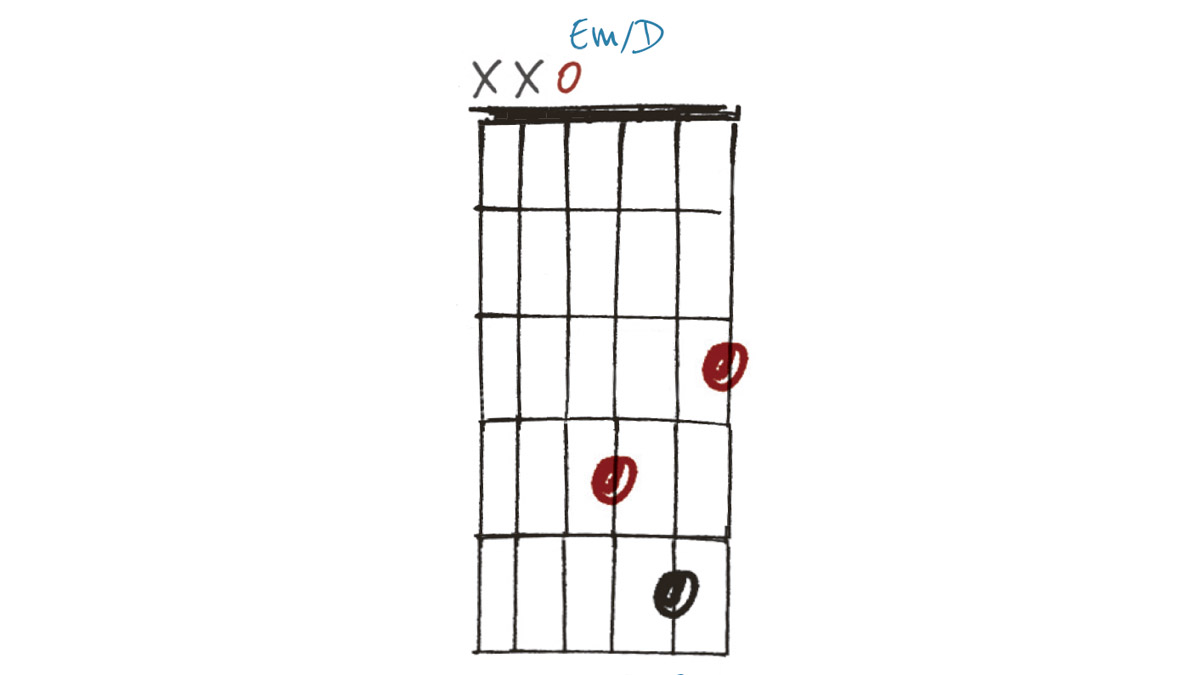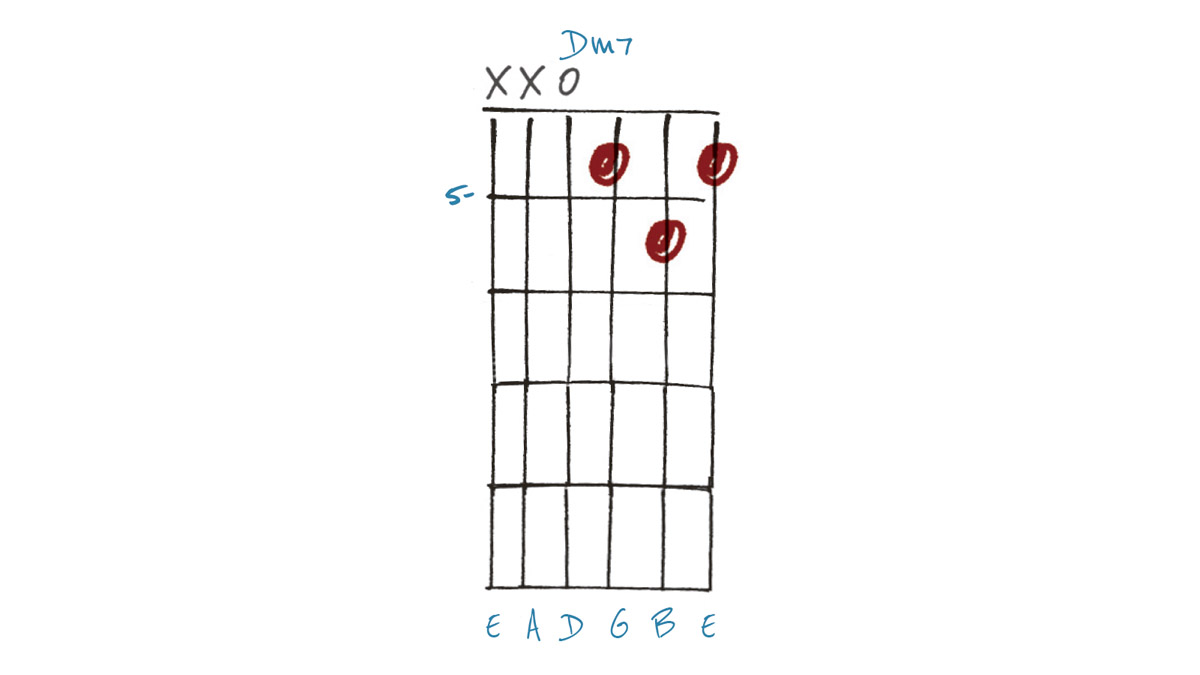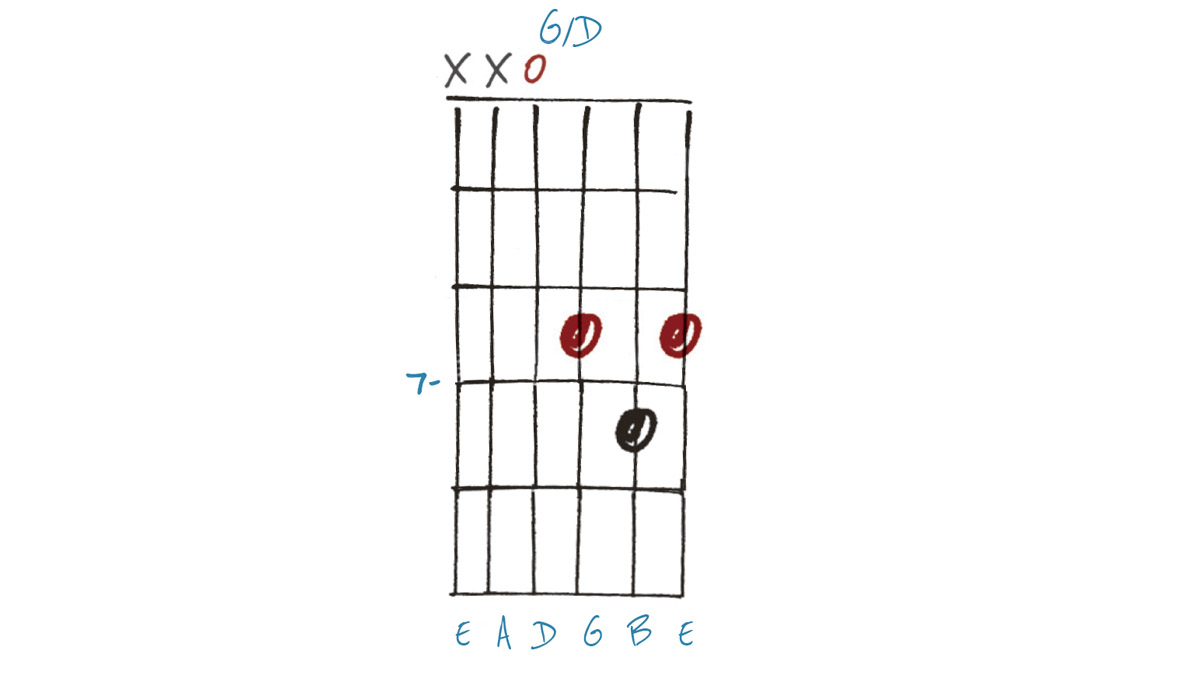
Few would dispute the fact that it’s helpful to learn chunks of the fretboard via patterns and scales. However, sometimes we can feel trapped within these same patterns, or hear ourselves repeating the same lines more often than we would like.
The vast majority of us rely on ‘stock’ phrases – and this doesn’t mean they aren’t valid or exciting to the listener. Having said that, we all want to progress, so the following chord shapes offer another way of viewing the available possibilities.
Chances are you’ll recognize fragments of the pentatonic shapes, arpeggios and CAGED chord shapes.
Not only are these useful for soloing but also alternative chord voicings, melodic lines that don’t sound ‘linear,’ as well as funky featured chord parts – think Nile Rodgers or David Gilmour’s funky playing on Another Brick In The Wall Part 2. The underlying message here is that while we may be dealing with the same groups of notes, different approaches give different results!
Example 1

Taking the open position Dm for granted, let’s move the shape up two frets to make an Em/D. The open D string gives us a nice chord as a ‘standalone,’ but you can also find the shape 2 Em pentatonic here, or find the notes to extend this into a full Em arpeggio.
Example 2

Using the CAGED chord principle, this Dmaj shape functions as an Fmaj triad in this position, though the D bass note makes us hear it as a Dm7. Looking more closely, you’ll also see this is a fragment of the shape 3 Fmaj pentatonic – or, if you’re taking the D bass note into account, shape 4 Dm pentatonic.
Example 3

The same shape moved up two frets gives us a G/D. This is useful as a chord in the context of the other examples, but it offers melodic/soloing possibilities, too. You can view this as part of a Gmaj arpeggio, or see it as part of a Gmaj or Em pentatonic shape.
Example 4

Taking the shape of a Cmaj triad, the open D bass note makes this a C/D, which ties it to the context of the other examples, but you can see it is also a small part of the Cmaj barre chord that resides here. Playing over Am would give an Am7 flavour, and there are Am and Cmaj pentatonics to be found here, too.
Example 5

This Dm could be viewed as part of the larger Dm barre, but by now you may see that moving these triads around puts us firmly in the ballpark of Gilmour’s chord vamping on Another Brick In The Wall Part 2. Triads like this are great for moving around to play signature parts, and easier than cumbersome chords.







